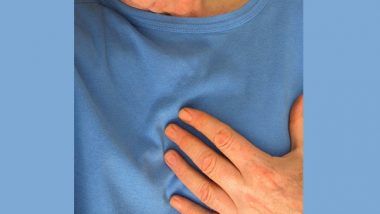In recent times Heart Attack has emerged as a significant cause of death and disabilities in India. Heart Attack is responsible for more than 35% of deaths in individuals of age 35yrs and above. Heart Attack is a life-threatening medical emergency which occurs due to sudden blockage of blood supply to the Heart muscles. This blockage occurs due to the blood clot(s) in major blood vessels supplying oxygenated blood to the Heart. If it is not treated promptly, it permanently damages heart muscles which may lead to death by Cardiac Arrest.
Symptoms of a Heart Attack
- Central chest pain spreading to the left arm, shoulders, back, neck and jaw
- Profuse sweating
- Difficulty in breathing
- BlackoutsWhat Should One Experiencing a Heart Attack Do?
If one experiences heart attack symptoms, he/she must seek urgent medical help. Meanwhile, he/she must avoid physical exertion. Always remember, every chest pain is a cardiac pain unless proven otherwise.Heart Attack Diagnosis- Diagnosis can be made in Emergency Departments by medical professionals by performing specific tests like Electrocardiogram, Cardiac Enzymes, chest X-ray and sometimes Echocardiography. Sometimes, serial ECGs and Cardiac blood Enzymes are needed to rule out the cardiac cause.Treatment for Heart Attack- Initially, the patient gets stabilised in the Emergency Department where he receives Analgesics (morphine), blood thinners (Anti-platelets & Anti-coagulant drugs), Nitrates and Statins. Primary angioplasty is considered as gold standard treatment in Heart Attack (Acute Myocardial Infarction) which should be carried out within 90minutes of the arrival of the patient to Emergency Dept. In Primary Angioplasty, the blood flow in the vessel supplying oxygenated blood to the heart is restored by removing the blood clot, and a stent is placed in it to keep the vessel open. At the centres where Primary Angioplasty is not available or not possible due to other reasons, then Thrombolysis (dissolving the blood clot by giving medicines) should be offered to patients as early as possible. If Thrombolysis is opted for, then it should take place within 30mins of the arrival of the patient to the Emergency Dept.Prevention- Prevention is always better than the cure of Heart Attack. To prevent Heart Attack, one must be aware of the modifiable risk factors which lead to Heart Attack.Modifiable Risk Factors of a Heart Attack Can Be Reduced by Making Lifestyle Changes-
- Being overweight and obese
- Smoking
- High cholesterol
- Hypertension
- Diabetes Mellitus
- Stress
- Sedentary lifestyle
If one has five risk factors, then chances of suffering a Heart Attack are 30% in the next ten years. This is equivalent to the risk of recurrence of Heart Attack in a patient who already had one. So the reduction in risk factors is of paramount importance.
Preventive Steps-
- Quit smoking; smoking kills, it is lethal-Amount of cigarettes smoked is directly proportional to the risk of Heart Attack and death due to Heart Attack. One must quit smoking; counselling and sometimes Nicotine Replacement Therapies are needed
- Consume Healthy diet- One should avoid junk food, fast food and red meat. Diet rich in vegetables and fruits prevents Heart Attack. One should opt for high fibre diet; carbohydrates with low Glycaemic Index should be preferred. Monounsaturated fatty acids and Omega-3 fatty acids should be included in the diet.
- Maintain the average body weight- Nowadays Obesity and being overweight is surpassing smoking as leading modifiable risk factor in a heart attack. There is a linear relationship between being overweight & obese with morbidity & mortality associated with heart attack. One must bring down Body Mass Index less than 25 by diet and exercise.
- Do regular physical activities- Studies have demonstrated that if one does regular aerobic exercise or moderate to intense physical activity for 150 minutes per week will have significantly fewer chances to have a heart attack than the one who doesn’t do. Event modest aerobic exercise like a brisk walk for 25 minutes per day reduces the significant risk of heart attack.
- Control the blood cholesterol level- One must undergo Lipid Profile testing in the early twenties. If blood Lipid levels are high, then one must control it by exercise, proper diet and if required by medicines (statins).
- Maintaining the blood pressure within normal range-One must retain Blood Pressure below 130/80mmHg to reduce this risk factor. Blood pressure can be controlled by doing regular aerobic exercise, by avoiding excessive consumption of salt and by avoiding stressful situations. A patient who doesn’t respond to lifestyle modification need medicines to control Hypertension.
- Diabetes control- Diabetes carries a very high risk of heart attack. Diet and exercise should be tried initially to control blood sugar within the normal range in diabetic patients. If it did not work out, then one must go for drug or Insulin Therapy. The HbA1C level should be in normal range in diabetic patients to prevent heart attack
(This article has been contributed by Dr Sandeep Gore, Head of Emergency Medicine, Fortis Hospital, Mulund)
(The above story first appeared on LatestLY on Oct 05, 2018 11:35 AM IST. For more news and updates on politics, world, sports, entertainment and lifestyle, log on to our website latestly.com).













 Quickly
Quickly


